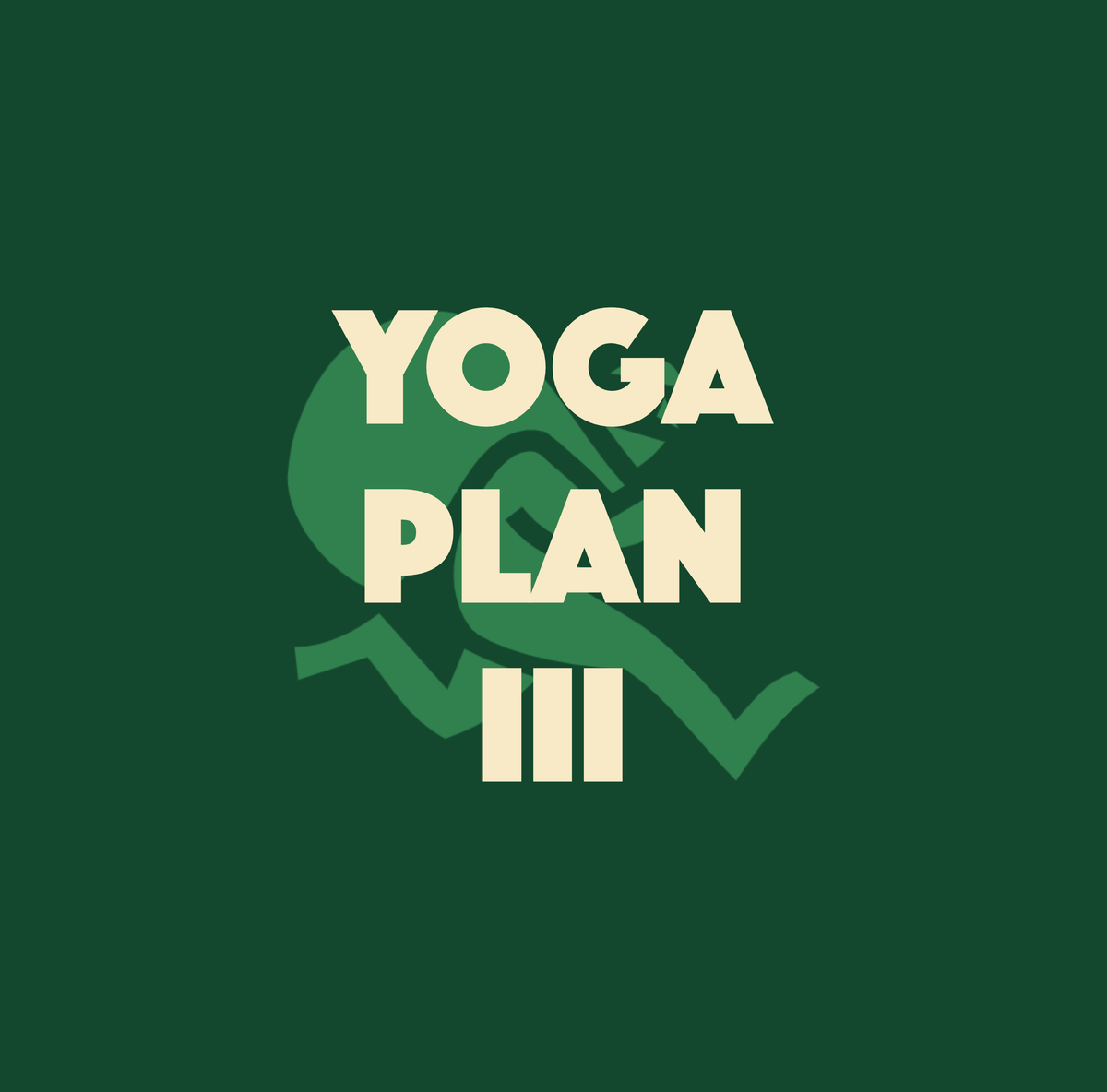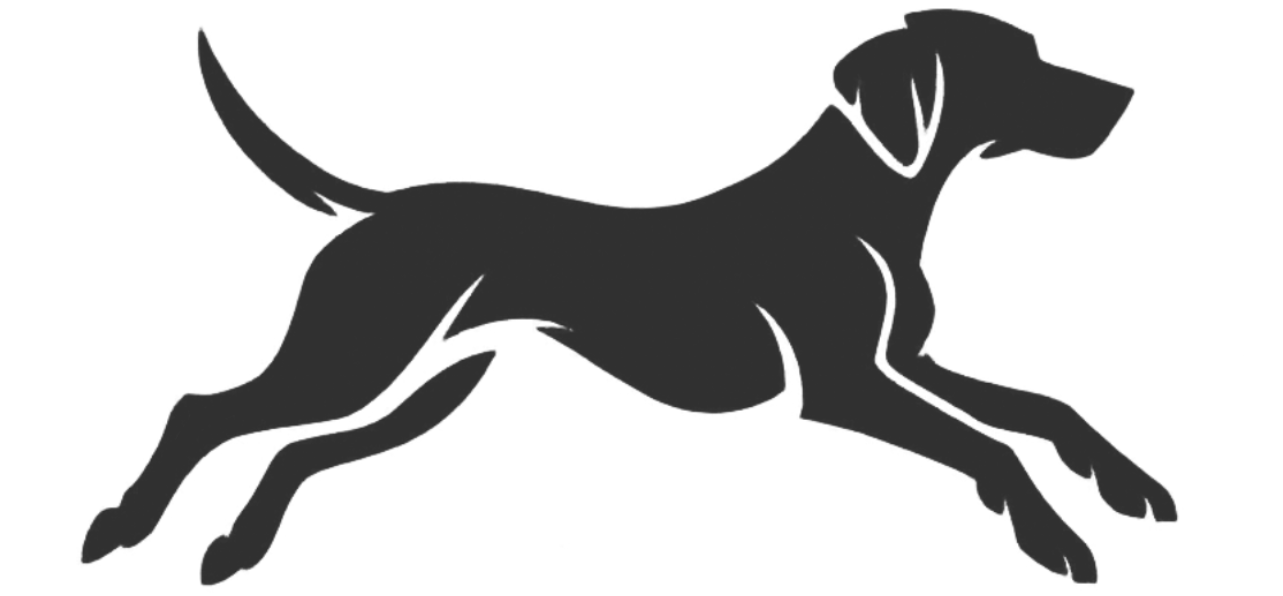
The Benefits of Yoga
Yoga is far more than just physical postures; it’s a rich, multifaceted practice that nurtures the body, mind, and spirit. Whether you’re just beginning or deepening your practice, exploring the essence of yoga can bring profound benefits.
Yeah, I know.
Whenever I hear people talk about hippy dippy stuff I get weirded out too. But here's the point - this is just another system of ethics and discipline. A lot of these concepts exist in other places like Buddhism, Gnosticism, Stoicism, Sufism, Taoism and so on. Add your -ism here.
There's insane stuff in any book that doesn't make sense or wouldn't be appropriate in our modern era. And keep in mind that all of these systems have been heavily edited with context relevant to the people of that time and place.
But the more you study across these ideas the root appears to be the same. Be a nice person, manage yourself and work hard on the responsibilities you have. It's just another way of living.
#1: Injury Prevention & Joint Health
Yoga helps identify and address imbalances in the body — the tight hips, weak glutes, or immobile ankles that often lead to injury in runners and lifters. Regular practice builds durability in connective tissue, increases joint range of motion, and reinforces good movement patterns.
#2: Flexibility, Balance & Mobility
You don’t need to become a human pretzel, but improving mobility matters. Better range of motion means better running form, stronger lifts, and fewer compensations. Yoga also enhances balance and stability, key for trail runners or anyone working on single-leg strength.
#3: Enhanced Breathing and Recovery
Yoga teaches you to breathe with control and awareness. Breath-linked movement improves oxygen delivery and energy efficiency during workouts. Post-run breathwork or yin poses calm the nervous system, speeding up recovery.
#4: Improved Posture and Core Strength
Holding poses like Warrior II, Plank, or Downward Dog builds deep core strength — not just abs, but stabilizers that protect the spine and keep your form solid under fatigue. Bonus: better posture makes you look like you’ve got your life together, even if you don’t.
#1: Stress Reduction & Nervous System Regulation
Yoga activates the parasympathetic nervous system — the “rest and digest” mode — which lowers cortisol, slows the heart rate, and reduces anxiety. Breathwork, stillness, and long holds train you to stay calm under pressure (in life and on race day).
#2: Mental Focus & Discipline
Holding poses when your legs are shaking builds the same focus you need to keep going when your brain says “quit.” Yoga sharpens attention, cultivates patience, and builds resilience — not through speed, but stillness.
#3: Emotional Awareness & Regulation
Yoga makes you listen. To your body, your breath, your thoughts. Over time, this builds emotional intelligence — the ability to recognize what you're feeling and respond, not just react. That self-awareness pays off during tough workouts, stressful days, and relationships.
#4: Connection to Self
Yoga isn’t about changing who you are — it’s about stripping away distractions so you can return to yourself. That’s the real training. Amidst the metrics and mileage, yoga reminds you that your worth isn’t based on your output.
#5: Presence Over Performance
Yoga brings you back into the present moment — where life actually happens. Not yesterday’s splits, not tomorrow’s race, but this breath, this step, this heartbeat. It’s a counterbalance to the productivity obsession so many athletes fall into.
#6: Ethical Framework
Through the Eight Limbs of Yoga, you get a roadmap: self-discipline, kindness, self-awareness, surrender. Even if you don’t buy into all the language, the core ideas are timeless — be a decent human, work on yourself, and keep showing up.
Thousands of years ago someone named Patanjali wrote down a series of practices called Ashtanga Yoga. You can buy or download that text, The Yoga Sutras of Patanjali, pretty much anywhere.
These 'limbs' encourage physical, mental, and spiritual development and are central to many yoga traditions, particularly Ashtanga.
I look at it like Avatar: The Last Airbender or becoming a Jedi from Star Wars. These are principles help you become a balanced, kinder, grounded person. You don't need to believe the woo-woo; it's just a good way to live.
#1: Yama – Ethical Guidelines
Yamas are moral principles that govern our behavior toward others. They include:
- Ahimsa (non-violence)
- Satya (truthfulness)
- Asteya (non-stealing)
- Brahmacharya (moderation)
- Aparigraha (non-greed)
#2: Niyama – Self-Discipline
Niyamas are observances for self-discipline and personal growth. They include:
- Saucha (cleanliness)
- Santosha (contentment)
- Tapas (self-discipline)
- Svadhyaya (self-study)
- Ishvara Pranidhana (surrender to a higher power)
#3: Asana – Physical Postures
The postures (asanas) you practice in a typical yoga class are part of this limb, designed to build strength, flexibility, and stillness, preparing the body for meditation.
#4: Pranayama – Breath Control
Pranayama involves breath regulation to enhance energy and mental clarity. Techniques like deep breathing, alternate nostril breathing, and breath retention are central to this practice.
#5: Pratyahara – Withdrawal of Senses
Pratyahara encourages withdrawal from external stimuli to cultivate inner awareness. It’s a bridge between the outer and inner world, preparing the practitioner for meditation.
#6: Dharana – Concentration
This limb focuses on cultivating single-pointed concentration, typically through meditation techniques. The aim is to quiet the mind by focusing on an object, mantra, or breath.
#7: Dhyana – Meditation
Dhyana is the state of uninterrupted flow of concentration. Through meditation, the practitioner enters a deep state of contemplation and unity with the object of focus.
#8: Samadhi – Bliss or Enlightenment
The final limb, Samadhi, represents the ultimate goal of yoga—self-realization and unity with the divine. It's a state of bliss, where the practitioner experiences profound inner peace.
Without a clear mindset, your training will eventually stall out. These principles aren’t about being perfect—they’re about staying aligned. When you live and train with integrity, discipline, and humility, everything works better. You recover faster. You stay grounded. You stop chasing and start becoming.
Yamas: Ethical Guidelines
These are about self-regulation—what you don’t do that keeps your energy clean and your progress honest.
- Ahimsa (Non-Harming): Don’t trash yourself. Don’t trash others. Respect your body in training, your limits in recovery, and other people’s efforts. Kindness = sustainability.
- Satya (Truthfulness): Be real—with yourself and others. Are you showing up? Are you sandbagging your training? Are your excuses hiding your potential?
- Asteya (Non-Stealing): Not just about stealing stuff. Are you taking without giving? Wasting time? Copying someone else’s path instead of walking your own?
- Brahmacharya (Energy Discipline): Control your impulses—scrolling, bingeing, burning out. This is about using your energy on purpose, not on autopilot.
- Aparigraha (Non-Grasping): Let go of what you don’t need. Possessions, titles, comparison. The less you cling to, the more you can move freely.
Niyamas: Self-Discipline
These are the habits that build resilience and momentum from the inside out.
- Shaucha (Cleanliness): Keep your space clean. Your routines tight. Your input (food, media, thoughts) clean. Your mind will thank you.
- Santosha (Contentment): Gratitude in progress. Appreciate the run, even if it’s slow. Enjoy the lift, even if it’s heavy. Celebrate where you are—then keep moving forward.
- Tapas (Discipline): Heat. Effort. Willpower. Tapas is showing up on the days you don’t feel like it.
- Svadhyaya (Self-Study): Pay attention. What worked? What didn’t? Journaling, reflection, reading—it all sharpens your awareness and guides growth.
- Ishvara Pranidhana (Surrender): Do the work. Release the outcome. Trust the process. Sometimes, the most powerful move is letting go of control and showing up anyway.
Asanas (postures) enhance flexibility, balance, and muscle strength, which supports better posture and reduces injury risk in runners. Its emphasis on breathwork and mindfulness also aids mental focus and stress reduction, beneficial for maintaining endurance.
There are numerous styles of yoga asanas, each offering a unique approach and experience. Whether you're looking for relaxation, flexibility, strength, or spirituality, there’s a style for everyone.
- Hatha Yoga is often considered the foundation of modern yoga. It’s a gentle and slower-paced practice, focusing on basic postures (asanas) and pranayama (breath control). Hatha yoga is great for beginners or those seeking to focus on proper alignment and flexibility.
- Ashtanga Yoga is rooted in the Eight Limbs of Yoga and a physically demanding practice involving a set sequence of postures linked by breath. It’s vigorous and disciplined, ideal for those who appreciate structure and a full-body workout. This is my go-to practice.
- Vinyasa Yoga is a dynamic, flowing style where movement is synchronized with breath. Each movement smoothly transitions into the next, creating a continuous flow. Vinyasa offers a creative, often faster-paced practice that improves stamina and mindfulness.
- Yin Yoga focuses on deep stretches and holding poses for several minutes. This practice targets the connective tissues (ligaments, fascia, and joints) to improve flexibility and encourage relaxation. It’s ideal for those looking for a meditative and restorative experience.
The Down Dog Yoga app has free practices that you can set by duration and difficulty level. Ashtanga Yoga (Old) and Vinyasa Yoga are my primary practices.
Breath is life. In yoga, it’s not just a way to stay calm—it’s a discipline of its own. Known as Pranayama, breath control is one of the Eight Limbs of Yoga and serves as a bridge between the physical and mental practices. Whether you're deep in a pose, grinding through a lift, or zoning in on a long run, your breath is the thread that connects body, mind, and intention.
When used with awareness, breath becomes a powerful tool for regulating energy, focus, recovery, and emotional state. It's not background noise—it's the remote control for your nervous system.
Why Breathwork Matters
Your breath impacts nearly every system in your body. Here's how:
- Oxygen delivery – Better breathing sends more oxygen to your muscles and brain
- Energy efficiency – Smooth, deep breaths conserve energy and reduce waste
- Mental focus – Conscious breathwork settles the nervous system and sharpens your awareness
- Recovery – Slow breathing triggers the parasympathetic nervous system (rest-and-digest mode)
If you’re hitting a wall too early in a run, losing form mid-lift, or feeling foggy in meditation—it might not be your body. It might be your breath.
How Breathing Works
Breathing isn’t just lungs doing their thing. It’s your diaphragm, a dome-shaped muscle below the lungs, that draws air in when it contracts and pushes it out when it relaxes.
There are two basic modes:
- Chest breathing (shallow, stress response)
- Diaphragmatic breathing (deep, relaxed, efficient)
Most people default to shallow breathing, especially under stress. But belly breathing—where your diaphragm takes the lead—is more effective for performance and presence. It increases oxygen uptake, reduces fatigue, and keeps you grounded.
Breathwork Techniques
Here are a few practical breathing exercises, rooted in both yogic tradition and modern performance science:
Diaphragmatic Breathing
This is your foundation. Practice daily, even just for a few minutes:
- Sit upright or lie down.
- Place one hand on your chest, the other on your belly.
- Inhale slowly through your nose. Your belly should rise—your chest should stay still.
- Exhale gently through your nose or mouth, letting your belly fall.
- Repeat for 1–2 minutes, keeping the breath smooth and relaxed.
Box Breathing
Used by Navy SEALs, meditators, and overthinkers alike. Great for calm and focus.
- Inhale for 4 seconds
- Hold for 4 seconds
- Exhale for 4 seconds
- Hold for 4 seconds
- Repeat for 3–5 minutes.
Deep Calm Breathing
Perfect for post-run recovery or stress relief.
- Inhale gently for 5–7 seconds
- Exhale slowly for 5–7 seconds
- Stay relaxed and repeat for several minutes
Ocean Breathing (Ujjayi Light)
A subtle yogic breath that builds heat and steadiness.
- Inhale through your nose while gently constricting the back of your throat
- Exhale with the same throat tension (like fogging a mirror—quietly)
- Keep it smooth and rhythmic for 3–5 minutes
Wim Hof-Style Breathing
For mental grit and energy activation. Do before training or on rest days.
- 30–40 deep breaths: inhale fully, exhale passively
- Hold your breath after the final exhale for as long as you can
- Once you can't, inhale deeply and hold for 10–15 seconds
- Repeat for 2–3 rounds
CO₂ Tolerance Table
Improves oxygen efficiency and endurance.
- Inhale normally
- Exhale fully, then hold
- Time how long until your first strong urge to breathe
- Track your progress over time
Avoid These Common Mistakes
- Chronic mouth breathing – Dries out your airways, causes shallow breath, and zaps your energy
- Forcing it – Breathwork should be intentional, not aggressive. If it feels stressful, back off.
- Forgetting under pressure – Breath awareness matters most when your system’s under load—stay conscious during heavy lifts, fast runs, or long poses
Breathwork Exercises
Here are a few practical breathing exercises, rooted in both yogic tradition and modern performance science:
Breathwork Tool
Breathing exercises naturally extend into the withdrawal of senses, concentration and meditation, which supports mental resilience and focus. Regular practice helps manage pre-race nerves and develop a calm, clear mindset, which is valuable for maintaining motivation and tackling long or challenging runs.
Meditation is your training ground for presence. The same focus that helps you sit still for five minutes can help you stay composed during mile 20 of a marathon, or hold form through the last set of a hard lift. It’s not a shortcut to enlightenment—it’s reps for your mind.
Why It Matters
- Mental clarity – Cuts through anxiety, overthinking, and distraction
- Stress regulation – Lowers cortisol, balances mood, and builds emotional resilience
- Focus & flow – Strengthens your ability to stay locked-in, whether you're on the mat or on the trail
- Recovery – Supports nervous system repair, helping you bounce back faster
How to Start
You don’t need incense or a shrine. Just sit down and breathe:
- Find a comfortable seat (floor, chair, whatever works)
- Set a timer—start with 2–5 minutes
- Close your eyes and focus on your breath
- When your mind wanders (it will), gently bring it back
- Repeat daily
That’s it. This is attention training. Over time, it builds the kind of calm that doesn’t crack under pressure.
Meditation is how I entered this entire world of yoga. I've always been interested in Buddhism and spirituality and all of that jazz, but reading about meditation as a tool for performance is what made me take it seriously at the beginning of my professional career. That practice alone changed my life.
As a neurotic New Yorker that was used to pounding multiple coffees a day, I didn't realize how on edge I lived. Before that I was an anxious, angry kid that felt powerless most of the time. Through breathing techniques and internal reflection through meditation, it helped me sift through the noise of my mind. I sure as heck ain't calm or a zen yogi, but is has shown me how to be far less reactionary and more intentional in many of my actions.
After five years of daily meditation and I'm still struggling with aspects of life...but that's life. I'm much better than I was before and I'm proud of that. The great work continues.
To Infinity and Beyond
I've said some pretty wacky stuff here so we'll end it here. But what's important is that your relationships with others and your relationship with self is key to everything.














Subscribe to get updates on new content, merch and more from Sendō Worldwide.
Check out some Research: our free collection of training plans, workout guides, nutrient-dense grocery lists, pace calculators, and other tools to support your quest.
Browse the Online Shop for apparel, accessories and training books to equip yourself for the path ahead.
Have a tip, story, or idea? It could end up in a future post. Email me anytime with questions, thoughts, or even confessions — we're all in this together.














